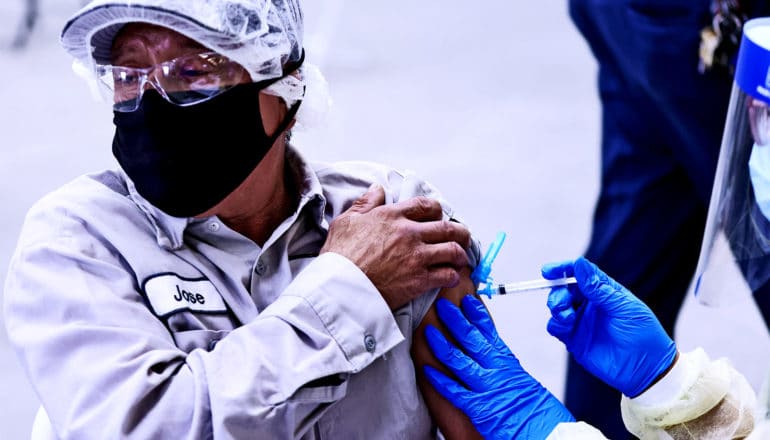
Prioritizing who receives the limited supply of COVID-19 vaccines available saves lives and reduces spread of infection, a new study shows.
While there is mostly universal agreement that older people should get priority, debates are currently underway about prioritizing COVID-19 vaccines for a variety of other groups. Still others argue against targeting at all.
“Prioritization has benefits because people differ in at least two key ways—their risk of infection and the likelihood of serious consequences from infection,” says senior author Michael Springborn, a professor in the environmental studies and policy department at the University of California, Davis and an economist focused on environmental risk, including infectious disease.
“We know that front-line essential workers have less capacity to socially distance and thus an elevated risk, while seniors are more seriously impacted by infection. Accounting for this substantially increases the benefits of vaccination.”
COVID-19 vaccine priority
For the study in the Proceedings of the National Academy of Sciences, researchers modeled COVID-19 transmission rates and the optimal allocation of an initially limited vaccine supply in the US under a variety of scenarios.
They found that deaths, years of life lost, and infections were between 17 to 44% lower when vaccinations targeted vulnerable populations—particularly seniors and essential workers—rather than an alternative approach where everyone is equally likely to be vaccinated.
“We also found that in regions where there was a faster increase in infections, and where there is less masking and social distancing occurring, targeting was even more important in avoiding those outcomes,” says lead author Jack Buckner, a PhD candidate in the UC Davis Graduate Group in Ecology.
Building on the standard approach in modeling analyses to account for age groups, the study is the first to include front-line essential workers as their own category. In doing so, the researchers identified that such workers should have vaccination priority along with or shortly after seniors. Policies that target based on both age and essential worker status substantially outperformed those that consider age only.
Prioritizing essential workers versus seniors depends on the conditions. For instance, when there is a good supply of effective vaccines and the outbreak is relatively under control, targeting essential workers first to help reduce overall spread can be ideal. But if vaccine supply is limited and cases and deaths are surging, targeting seniors and the most vulnerable directly may be the better strategy.
Previous studies have assumed that a given prioritization strategy remains constant over time. This study uniquely allows for prioritization to evolve as conditions change, such as when more people in certain groups become vaccinated.
“There is a substantial value to prioritization, at least for the first few months of the vaccine rollout,” Springborn says.
“Once a large proportion of the most vulnerable people or the most likely to be exposed have been vaccinated, it becomes less important who gets it,” says Buckner.
Uncertain future
The authors say that while the scientific community and public have learned a lot about SARS-CoV-2, the virus that causes COVID-19, there are still many uncertainties to address.
This includes how well vaccines impede transmission, how much individuals will relax their protective measures as vaccinations progress, and how durable immunity will be given the rise of new variants.
The authors took a general approach adaptable for future disease outbreaks.
“The analytic approach put forward in this study to assess the optimal dynamic allocation of vaccines adds to the methodological toolkit with applications beyond the COVID-19 pandemic,” says coauthor Gerardo Chowell, a professor of epidemiology and biostatistics at Georgia State University.
The National Science Foundation and the California Breast Cancer Research Program of the University of California funded the work.
Source: UC Davis
The post Prioritizing who gets COVID-19 vaccines saves lives appeared first on Futurity.
from Futurity https://ift.tt/3msDBex
No comments:
Post a Comment